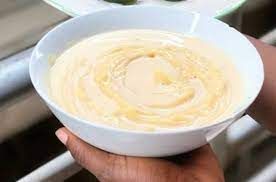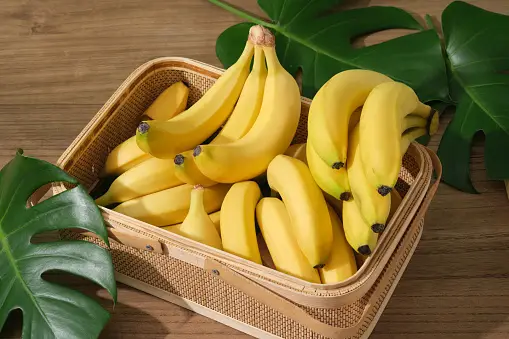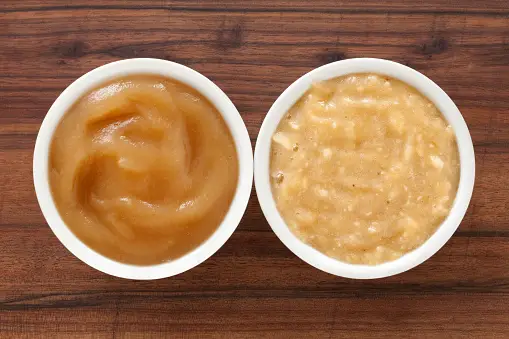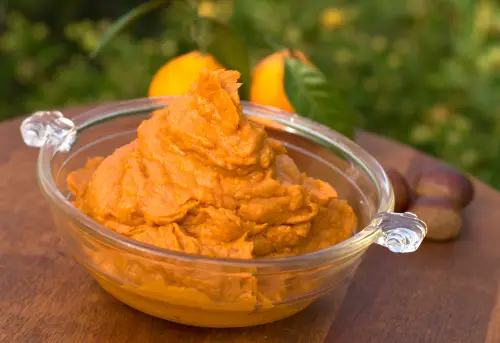Breastfeeding plays a vital role in a newborn's nutrition. Babies need adequate breast milk in other to develop a healthy body system.
For optimum growth and development, mothers are advised to breastfeed their babies for the first six months.
Afterward, your baby can begin to consume complementary foods. There are several meals of choice when picking solid food for babies.
At 6 months of age, babies are introduced to solid food and the first thing your mind goes to is pap. Pap is made from corn, millet, or guinea corn.
At the 6th-month mark of your exclusive breastfeeding, pap is a good solid food to start with. It has a texture that is closer to breast milk than any other meal.
It goes by many names like ogi, akamu, kira, or masara. It contains probiotics that help prevent dysentery, diarrhoea, and diabetes in babies. Pap is gluten-free and it’s one of the most nutritious solid foods when weaning your baby.
Every baby is different and some might have an aversion to pap. We have carefully curated 5 pap recipes to spice up your baby’s pap. This way they can enjoy the goodness of pap with added nutritional content.
Nutritional Value of Pap
The 2018 study of the nutritional value of pap revealed that it is rich in essential properties like carbohydrates, Vitamin A, Vitamin B6, potassium, and more.
Pap is made with corn (white, yellow, or guinea corn) and is processed by a fermentation and sieving process.
The Nutritional Value of 100g Pap
Calories: 319kcl
Protein: 3.4g
Carbohydrates: 73.00g
Fibre: 12g
Water: 89.775g
Calcium: 50mg
Iron: 8.5mg
Sodium: 2mg
Vitamin A, RAE: 1ug
Vitamin B6: 0.01mg
Benefits of Pap to Babies
Pap is safe to eat and has several benefits for babies aged 6 months and above. They include:
- Pap is an excellent source of potassium. It lessens the effects of sodium in the body while easing tension in the blood vessel walls.
- Pap is a good source of energy. It is rich in carbohydrates and promotes mental sharpness. The carbohydrate present in pap also accelerates the metabolism of fat.
- Pap is easy to digest. It places less stress on the digestive system, making it an excellent dietary choice for your baby's gut health.
- Pap aids in healthy weight gain in children. It contains a good number of calories that aids skinny or malnourished children to gain more healthy flesh.
- Pap serves as a good probiotic for children and helps prevent diarrhoea.
- Made from sorghum, pap helps with the formation of strong bones and teeth in children.
- Pap provides the daily requirement of iron per serving. This will help synthesize blood cells and prevent anemia in babies.
- Pap is an ideal food for people with metabolic disorders. It helps protect the health of a baby's heart.
- Pap replaces lost bodily fluid as it contains a lot of water. Consider using this for babies with diarrhoea.
- Pap promotes better sleep quality. Thytorphane present in pap helps increase the level of serotonin in the body. This helps with stress management and improves baby sleep.
5 Pap Recipes for Your Baby
Below are ways you can make your baby's pap to improve the nutrients and flavor.
Peanut Butter Pap
Peanut butter helps in promoting good blood vessels. It can also prevent heart and vascular diseases.
Ingredients:
- Corn flour
- Peanut butter
- water
Procedure
- Blend corn flour and peanut butter till smooth.
You can refrigerate it or make pap instantly with the puree.
Fruit-infused Pap
In this recipe, the fruits are added after the corn has been fermented and sieved. Apples can help reduce the risk of cancer and diabetes, while carrots contain cancer-fighting beta-carotene.
Ingredients:
- Fermented corn starch
- Carrots
- Apples
- Water
Procedures:
- Thoroughly wash carrots and apples.
- Blend and sieve
- Separate and boil a portion of it.
- Mix the first portion of the fruit blend (unboiled) with cornstarch.
- Complete by mixing the hot-boiled pap with the dissolved starch till it is ready.
Tom Brown Pap
This recipe contains several ingredients to help prevent cell damage and fight diseases.
Ingredients:
- Maize
- Corn
- Millet
- Guinea corn
- Soybeans
- Peanuts
- Dried dates
- Cashew nuts
- Almond nuts.
- Water
Procedure:
- Remove seeds from the dates.
- Soak soybeans in hot water and wash off the skin.
- Sun dry all ingredients.
- Roast all (except soybeans) in a pan.
- Dry blend the ingredients and sieve
- Store in a dry, air-tight container.
You can make the powder into pap just like custard anytime you like.
Banana-flavored Pap
This recipe is best if you want to improve the smell of your pap.
Ingredients: Banana flavor.
Procedure:
- Wash, ferment, and sieve corn seeds.
- Separate the chaff from the liquid.
- Add 28ml banana flavour to about 2 liters of pap liquid. This will improve the smell and flavor.
- Sieve and refrigerate.
Nutty Pap
The ingredients in this recipe can help reduce the risk of a blood clot.
Ingredients:
- Guinea corn
- Yellow corn
- Millet
- Coconuts
- Cashew nuts
- Peanuts
Procedure:
- Blend fermented guinea corn, yellow corn, and millet with coconuts.
- Sieve and separate the chaff from the liquid.
- Blend cashew nuts and peanuts.
- Add sieved liquid to the pap starch
- Whisk together
- Boil for 2 minutes.
You can then finish making it with hot water. Serve with sweeteners like honey and milk.
If your baby is a picky eater, serve their pap with natural sweeteners and ingredients like soya milk, roasted groundnut powder, sugar, crayfish powder, ripe diced bananas, strawberry, and fruit smoothies.
And if these recipes don’t meet your needs, consult a nutritionist to examine your baby. Do you know any pap recipes? We'd love to know more in the comments!










Comments